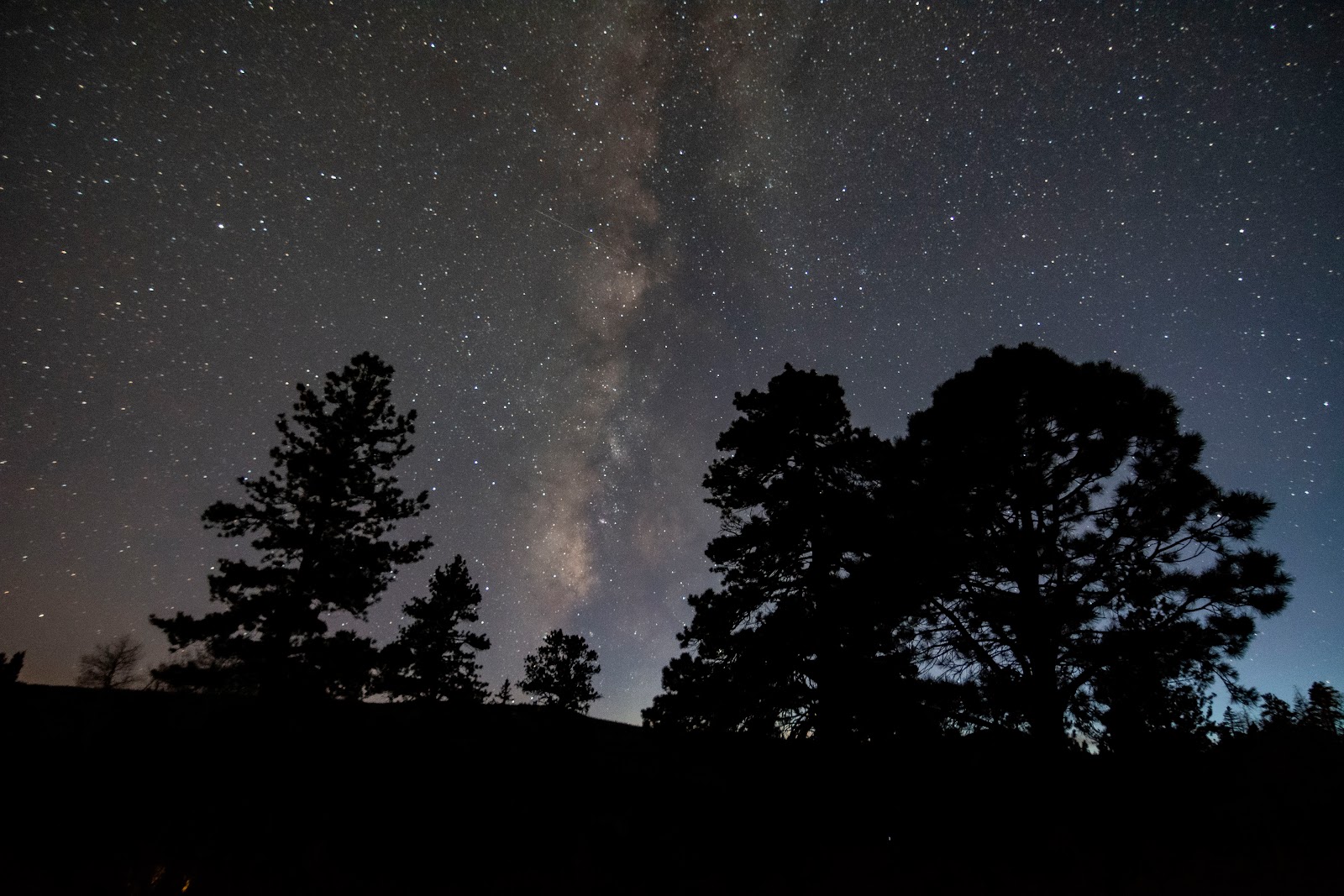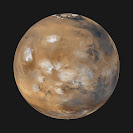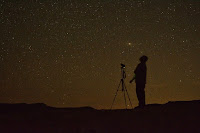Introduction
March was a so-so month to get out and enjoy the stars. The first half of the month was decent, with a few cloudy days, but Utahns mostly saw rising temperatures to welcome spring season. Unfortunately for stargazers, the second half of the month brought rain, snow, and cooler temperatures. I could not commit the time for a Messier Marathon but I have already set up plans for 2025. I purchased a new telescope capable of taking amazing photos of the Sun, Moon, and deep sky objects. I hope to be able to use this telescope more as the temperatures improve and share them here.
"April showers bring May flowers," as the saying goes, but for my fellow stargazers, we hope for warm temperatures and clear skies during April. This month will bring the return of the Lyrid Meteor Shower. There will also be several planetary conjunctions this month, which will include all of the planets (not at the same time!), excluding the Earth. Comet Pons-Brooks may also reach unaided-eye visibility this month and should be looked at every evening. Even with all of these great events, I feel that the total solar eclipse that occurs this month will dwarf them all.
Mercury may be elusive during April. During the first few days of the month, this innermost planet can be found hovering close to the western horizon after sunset. It will reach inferior conjunction with the Sun on April 11th but will return to the morning sky. On the 18th, Mercury and Venus can be found just 2° apart. A high elevation and clear view of the eastern horizon will be required to view this planetary conjunction. By the 30th, Mercury will fare a little better, but a clear view of the eastern horizon before sunrise will still be necessary.
Venus will be a difficult target for Utahns over the next few months. The best chance of viewing this planet will come in early April when Venus lies further from the Sun and rises earlier in the morning sky. A thin crescent Moon can be found close to Venus on the 7th when the pair is less than 1° apart. Mercury and Venus will also have a planetary conjunction on the 18th. Venus will soon disappear from the sky but will return later in the year.
Mars will rise about 30 minutes before the Sun as the month begins. Early morning observers will also notice Saturn rising shortly after the Red Planet. With each passing morning, the pair of planets will appear to close in on each other until the 10th, when the pair can be found less than 1° apart. A thin crescent Moon will join the pair of planets in the sky on the 6th. After the planetary conjunction, Mars will appear to rise straight above the eastern horizon as Saturn pulls away, heading towards the southwest. The Red Planet will be hard to spot in the morning glow of the Sun but does brighten slightly throughout April. At the end of the month, Neptune will pair up with Mars, being less than 0.1° apart. This pair will be quite striking with Mars' red color and Neptune's blue. A pair of binoculars or telescope and a clear eastern horizon will be necessary to see this conjunction.
Jupiter will be an easy target during April as it shines brightly after sunset. The Pleiades can be found directly above this gas giant throughout the month. While residing between Jupiter and the Pleiades, observers can spot Uranus, which is a short distance away from Jupiter. The pair of planets can be found less than 1° apart by the 20th. A nearly New Moon can be found within 4° of this pair of planets on the 10th. Comet Pons-brooks can be found close to Jupiter during the first few weeks of the month.
Saturn will be hard to spot during the first few days of April but will rise earlier with each passing morning. On the 6th, the Moon will be less than 2° away from this ringed world. Saturn will be trailing Mars in the morning sky until the 10th when the pair will be less than 1° apart. With each passing morning, Saturn will rapidly pull away from Mars, ending the month about 12° away.
Uranus can be found a short distance above Jupiter as April starts out. Almost directly above Uranus, observers should be able to spot the Pleiades. I can see this faint cluster of stars from my Bortle Scale 7 home outside of Salt Lake City. By the 12th and 13th of April, Comet Pons-Brooks can be found just below Uranus and Jupiter in the evening sky. A dark sky will likely be required to view this comet with a pair of binoculars. On the 20th, these two planets will meet up in the night sky for the 3rd planetary conjunction of April. Jupiter will be easy to spot, but a pair of binoculars or a telescope will be needed to view Uranus. On the 10th, a thin crescent Moon will pass above these two planets as they converge.
Neptune recently reached conjunction with the Sun and will be hard to spot during April. The best chance will come near the 28th when this most distant planet can be found near Mars. A steady morning sky and a pair of binoculars or telescope will be required to view Neptune in the morning twilight.

Pons-Brooks, Lyrid Meteor Shower, and Eclipse
April brings many events that should interest both serious and casual stargazers. With temperatures warming up, more individuals will find themselves outdoors. This makes for the perfect time to enjoy the night sky as well. One of the first objects a stargazer should try to see is Pons-Brooks, a periodic comet discovered in the early 1800s. The best time to view this comet is in early April when it can be found in the evening sky near Jupiter. On the 12th and 13th of the month, Pons-Brooks can be found just below bright Jupiter and dim Uranus in the evening sky. If observers are trying to view this comet earlier in the month, it can be found to the north (right) of these two planets. If viewing later than this date, then it can be found to the left until it meets up with the Sun and becomes lost from view. A dark sky site and a clear view of the western horizon will be required. Depending on how bright Pons-Brooks becomes, a pair of binoculars, a telescope, and/or a camera may also be required.
The next, and probably most exciting, event of the month is a total solar eclipse on the 8th. Unfortunately, potential observers in Utah will not see the eclipse but will instead have to travel to the path of totality. An interactive eclipse map can be found at Time and Date. This website, along with NASA, will have live video. I am fortunate enough to be able to travel to Texas in an attempt to view this eclipse. I also traveled to view the total solar eclipse of 2017 and can certainly understand why "eclipse chasers" exist in the world! A total solar eclipse is a must-see for anyone, regardless of their astronomy interest level. During totality, observers should easily see Jupiter, Saturn, Mars, and Mercury. The brightest stars will also be easy to spot. If Pons-Brooks has an outburst around the 8th, it should also be visible. Perhaps one of the most interesting events is when the daytime animals stop their calls and nocturnal ones begin theirs. Anyone viewing this eclipse should remember to wear proper solar glasses and use solar filters on any equipment aimed at the Sun.
The Lyrid meteor shower occurs on the 22nd, but unfortunately, the Full Moon phase is on the 23rd, obscuring all but the brightest meteors. Observers should still travel to a dark sky site the week before or after the peak date to view the Lyrids. These meteors will appear to radiate from Lyra. Individuals unsure where this constellation lies in the night sky should look towards the Summer Triangle, an asterism made up of the three bright stars Vega, Deneb, and Altair. A camera may also help observers capture these meteors. Using a widefield lens or setting, aim the camera toward this constellation and take several long exposure images.
April 01: Last Quarter Moon🌗
April 05: Moon passes within 2° of Mars
April 06: Moon passes within 2° of Saturn
April 07: Moon passes within 1° of Neptune
April 07: Moon passes within 1° of Venus
April 08: New Moon 🌑
April 08: Total Solar Eclipse
April 10: Moon passes within 4° of UranusApril 10: Moon passes within 4° of JupiterApril 10: Mars and Saturn conjunctionApril 11: Mercury reaches inferior conjunctionApril 15: First Quarter Moon 🌓April 18: Mercury and Venus conjunctionApril 20: Jupiter and Uranus conjunctionApril 22: Lyrid Meteor Shower PeaksApril 23: Full Moon 🌕April 26: Moon passes within 1° of AntaresApril 28: Mars and Neptune conjunction










